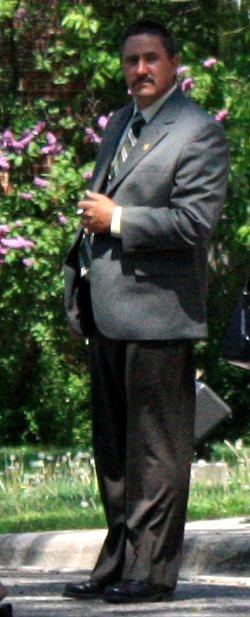The trial of Clayton Lapensee concluded yesterday with closing arguments by the Crown and defence attorneys.
In his closing statements Friday, Lapensee's lawyer, Bruce Willson, said the crux of the case balances on testimony given by a bartender at the Roosevelt Hotel, Amanda Bruni, and by a clerk at a convenience store, Bertha Burns.
Amanda Bruni said she spent about 25 minutes interacting for brief periods with Lapensee at the Roosevelt Hotel, moments before the tragic crash he admits he caused in November, 2005.
She said that Lapensee seemed fine, not drunk at all.
Bruni is an experienced bartender, certified in Smart Serve and trained to recognize signs of drunkenness, someone who knows better than to serve alcohol to drunk patrons.
Lapensee has pleaded not guilty to charges of operating a motor vehicle while over the legal limit of blood-alcohol; operating a motor vehicle while impaired and causing the death of Anita Proulx and bodily harm to Amanda Proulx.
Willson said the Crown must prove beyond a reasonable doubt that Lapensee was actually impaired at the time of the collision and that his impairment was a major contributing factor in the causes of that collision.
Superior Court Justice Edward Koke asked Willson what he should do with Bruni's suggestion that she would be opening herself and her employer to possible liability if she admitted Lapensee was drunk and she served him.
"You don't know that there's a lawsuit," Willson said. "You don't know if Bruni has ever been named in any lawsuit. It's all just hearsay and supposition."
Willson said evidence given by Bruni should not be dismissed as less credible than evidence given by Burns, just because Bruni is a bartender and she could possibly get sued for serving alcohol to a drunk person.
To completely ignore her evidence would be a great error, he said.
The possibility that her evidence might be ignored would have had to be put to her during her testimony to give her a chance to address the issue and that didn't happen, Willson said.
"You'd have to let her defend herself," the defence lawyer said. "It's only fair and proper."
Willson said that Bruni's testimony supports Lapensee's evidence that he was not drunk at the time of the collision.
Lapensee said he didn't know what caused his truck to veer into oncoming traffic on November 25, 2005, but he did know it wasn't because he was drunk.
"I was not drunk," Lapensee insisted. "My ability to operate a motor vehicle was not impaired."
Crown Attorney Bill Johnson argued that Lapensee's evidence was highly suspect because of inconsistencies both from his previous trial and within parts of this trial.
"He keeps changing his story to make it fit with the evidence presented here," the Crown argued.
Johnson said that Lapensee's first story, given to police when he was questioned about his allegation that his truck had been stolen, had him home sick in bed all day after finding out there was no work for him to do at his workplace that day.
Then he changed it when the Crown produced receipts to prove he went out at least twice that day.
He changed it yet again when the Crown produced a witness saying he saw Lapensee snow-blowing his driveway at about 4:30 in the afternoon.
Johnson said Lapensee changed his story so many times that his credibility is highly suspect.
The Crown also argued that Bruni's experience with Lapensee was limited.
"The only time she's ever seen him was when he's in a bar drinking, and when he was in there that day he was sitting down almost the whole time." he said. "She didn't have an opportunity to observe his movement and coordination."
On the other hand, Burns, the convenience store clerk, had seen Lapensee in social situations since he was a friend of her husband and her son.
She had observed Lapensee more often, in more different situations and for longer periods of time, both when he was drunk and when he was sober, than Amanda Bruni had, Johnson said.
Burns said Lapensee was drunk, in her opinion, when he came into the Video Max store where she was working on November 25 at 3:30 p.m.
Burns thought Lapensee was so drunk that she was worried about his driving.
She hoped the police would notice and stop him.
But they didn't.
"I have to try to reconcile evidence of these two witnesses," Judge Koke said.
Lapensee was found guilty of the charges he currently faces in January 2008, but the Court of Appeal for Ontario struck down that verdict and ordered a new trial in September 2008.
This, his second trail, began last Monday with a voir dire (a trial within a trial), to determine whether evidence submitted by Sault Ste. Marie Police Breath Technician Gediminas (Joe) Poderys would be admissible in court.
Judge Koke found it was and testimony in the case was heard until Friday.
The judge is expected to render his decision on the three charges Lapensee faces on July 14.
